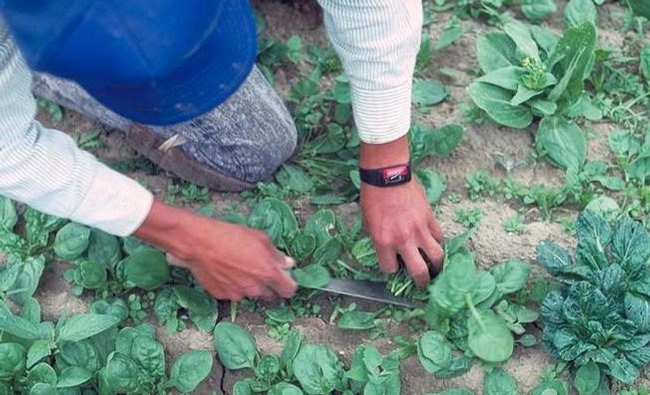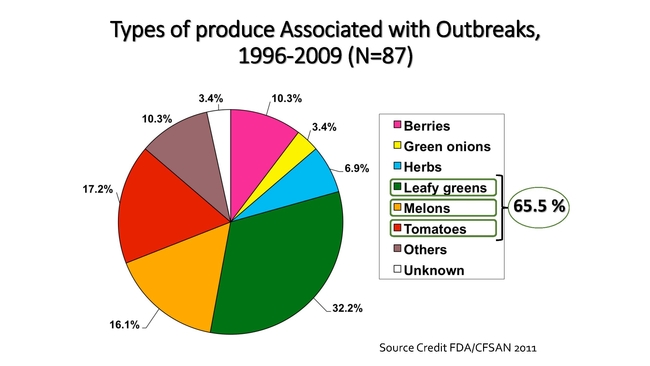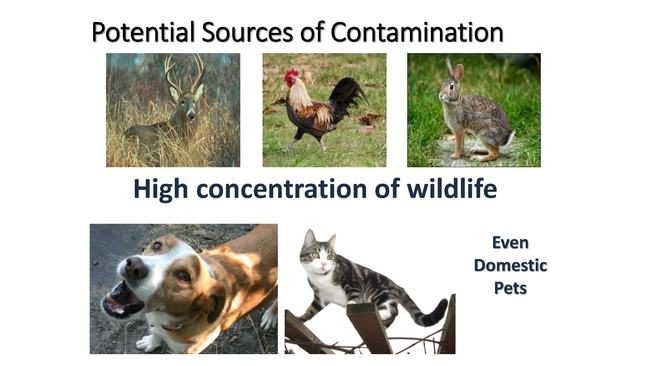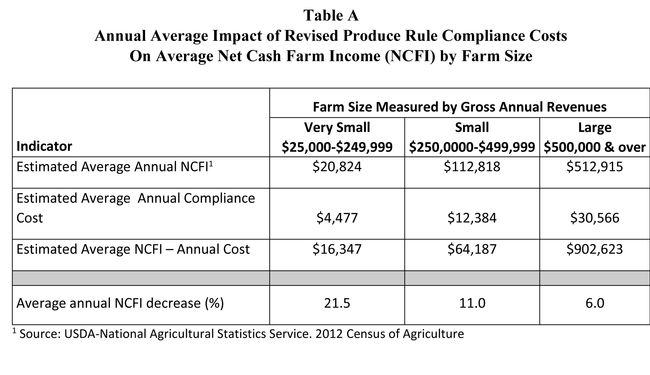The Food Safety Modernization Act

Comments about these revised rules are due to the FDA by December 15, 2014. If you haven't already done so, I encourage you to review the key revisions summarized on the FDA FSMA website (http://www.fda.gov/food/guidanceregulation/fsma/default.htm), as well as my comments below regarding some of the key revisions. You might also want to look at the National Sustainable Agriculture Coalition's excellent review of the FSMA: http://sustainableagriculture.net/fsma/; I reviewed their materials and borrowed some their language for this article.
You can submit your comments to the FDA at: http://www.regulations.gov/#!submitComment;D=FDA-2011-N-0921-0973 (for the Produce Rule) and http://www.regulations.gov/#!submitComment;D=FDA-2011-N-0920-1553 (for the Preventive Controls Rule).
Revised Definition of Covered Farms

However, the FSMA's $500,000 sales threshold (adjusted for inflation) for a farm to be eligible for modified requirements through a qualified exemption still relates to total farm revenues, rather than just produce sales. This cannot be changed because the text of the FSMA legislation specifically refers to “all food sales” A farm is eligible for modified requirements if it:
- has less than $500,000 in annual gross sales (adjusted for inflation) of all food products (includes commodities, hay, dairy, livestock as well as produce) over a previous three-year period AND
- sells the majority of the food directly to “qualified end-users”--consumers, restaurant and retail food establishment (e.g., a grocery store) that is located in the same state as the farm or not more than 275 miles from the farm.
Complying with the modified requirements means that a farm only needs to:
- Provide the name and complete address of the farm where the produce was grown on either a food packaging label or on a sign at the point of purchase;
- Comply with the “compliance and enforcement requirements” of the Produce Rule; and
- Be subject to the provisions regarding the withdrawal of your status as a partially covered (“qualified exempt”) operation; FDA can revoke your “qualified exempt” status in certain circumstances.
Broadened Definition of a “Farm”
Under the revised FSMA provisions, a farm that packs or holds raw agricultural products grown on another farm under a different ownership no longer has to register as a “food facility”. The original rule would have required a farm that aggregates produce from multiple farms for a CSA program to meet the Preventive Controls requirements. The revised rules will allow the farm to comply only with the Produce Rule. The “farm” may also:
- Pack or hold raw agricultural products;
- Manufacture or process food for on-farm consumption only;
- Dry/dehydrate raw agricultural products, as long as there is no additional processing; and/or label and package raw agricultural products as long as there is no additional processing.
Please be aware that the FSMA's terminology is very nuanced. Chopping or slicing fresh produce for sale – like carrots or apples – is considered to be processing, which means that you operate a “facility.” (Certain harvesting activities like trimming outer leaves of produce, or removing stems or husks, are not considered processing.). Washing is considered part of harvesting when done in the field. But, if it is done during the production of fresh-cut produce, for example, it is considered manufacturing or processing. Labeling and packaging are considered manufacturing activities unless you are labeling or packaging a raw agricultural product and are not doing any additional manufacturing or processing to the product. If there is no additional manufacturing or processing, labeling and packaging are considered farm activities and do not trigger the facility definition.

Revised Water Quality Standard and Testing Are More Flexible

For farms that have to test their water, the FDA is proposing three numerical standards below for testing.
- No detectible E. coli present per 100 ml of water: This standard would apply to water used for an activity during and after harvest, water used to make agricultural teas, and water used in sprout irrigation. The quality of untreated surface water used for these purposes must be tested from each source of the water “with an adequate frequency to provide reasonable assurances that the water meets the required standard”. You must have adequate scientific data or information to support your testing frequency.
- Farms using untreated groundwater for purposes that trigger a testing requirement will now have to test their water supply a maximum of 5 times in the first year (4 per year/growing season plus one test per year) rather than testing on a quarterly basis as originally proposed. Their untreated groundwater used to irrigate in a manner that directly contacts the harvestable portion of the crop will have to meet the following standard: a geometric mean of no more than 126 colony forming units (CFUs) per 100 ml.
- Testing of untreated surface water used for growing produce other than sprouts involving direct contact with the harvestable portion will require the collection of 20 samples over the first 2 years, followed by an annual minimum sampling of 5 per year, rather than monthly or weekly as previously required. The water will have to meet the following standard: a statistical threshold value (STV) of 410 CFUs generic E. coli per 100 ml for a single water sample, and a geometric mean of no more than 126 CFU per 100 ml. If your water testing shows that you exceed these values, you can still use your water, as long as you apply an appropriate time interval between the end of irrigation and harvest as determined by calculating the “microbial die-off”.
Clarification of Provisions on Wild Animals

Manure Application Interval Will Be Studied Further
The FDA had previously proposed a nine-month minimum time interval between the application of untreated soil amendments of animal origin (including raw manure) and harvesting. This requirement conflicted directly with the USDA National Organic Program's standards, which require a 120-day interval between the application of raw manure for crops in contact with the soil and 90 days for crops not in contact with the soil. The FDA now proposed to conduct a risk assessment and extensive research to strengthen scientific support for any future proposal. Additionally, the FDA is proposing to eliminate its previously proposed 45-day minimum application interval for compost.
Significant Compliance Costs Remain for Small-scale farms
The provisions reviewed above all were improvements over the original FSMA Produce Rule. The revised rules reduced the estimated number of farms in the United States covered by the FSMA by 4,708, of which 2,885 are “very small”. However, some of the provisions still impose disproportionately high compliance costs on smaller-scale farms, as indicated below in Table A. Smaller-scale farms typically have very constrained cash flows. The added expenses to comply with the FSMA makes their cash flows even tighter and reduces their already low level of profitability. If a "very small" farm loses over a fifth of its net cash farm income, this could have significant impacts on its sustainability. And these decreases do not include the one-time capital expenses that a farm may have to incur, such as to modify restrooms or handwashing facilities and to build fences!
The percentage decrease in net cash farm income attributable to the costs of complying with the FSMA declines as farm size increases. Clearly, there are economies of scale in complying with the FSMA. The FSMA includes delayed implementation of FSMA compliance for smaller-scale farms. Policymakers should also consider providing subsidies and/or no-interest loans for the capital expenditures smaller-scale farms need to make to comply with the FSMA.
Again, please consider submitting comments to the FDA about the proposed FSMA Produce Rule and the Preventive Controls Rule. You can post your comments using the links at the beginning of this article. You can review the FSMA's key revisions summarized on the FDA's FSMA website (http://www.fda.gov/food/guidanceregulation/fsma/default.htm). Also consider reading at least part of the National Sustainable Agriculture Coalition's excellent review of the FSMA.
